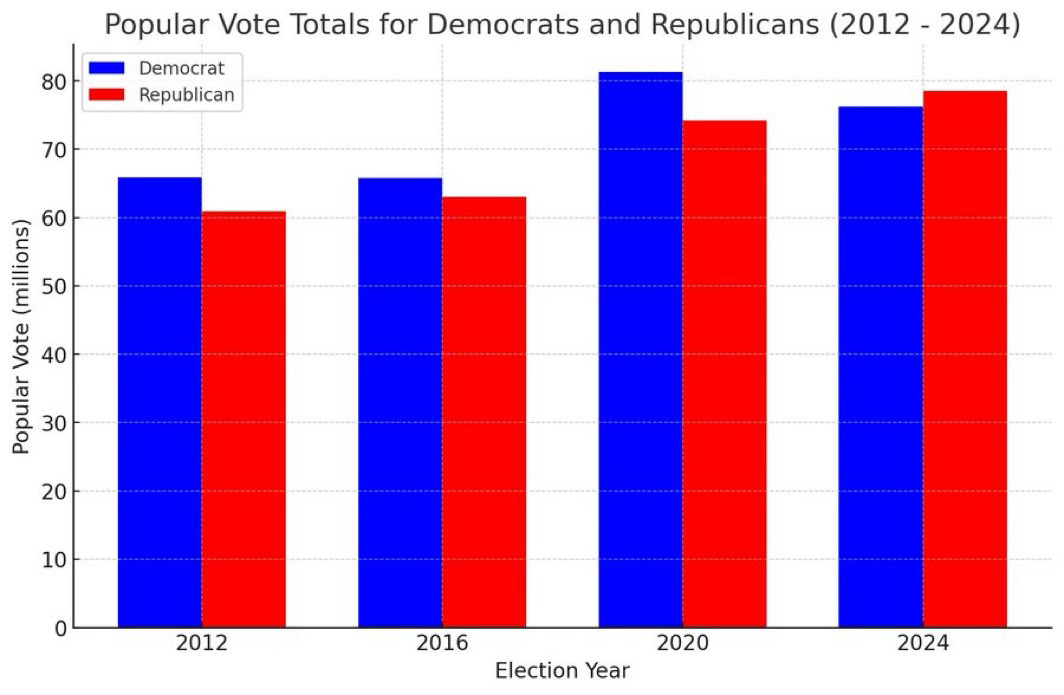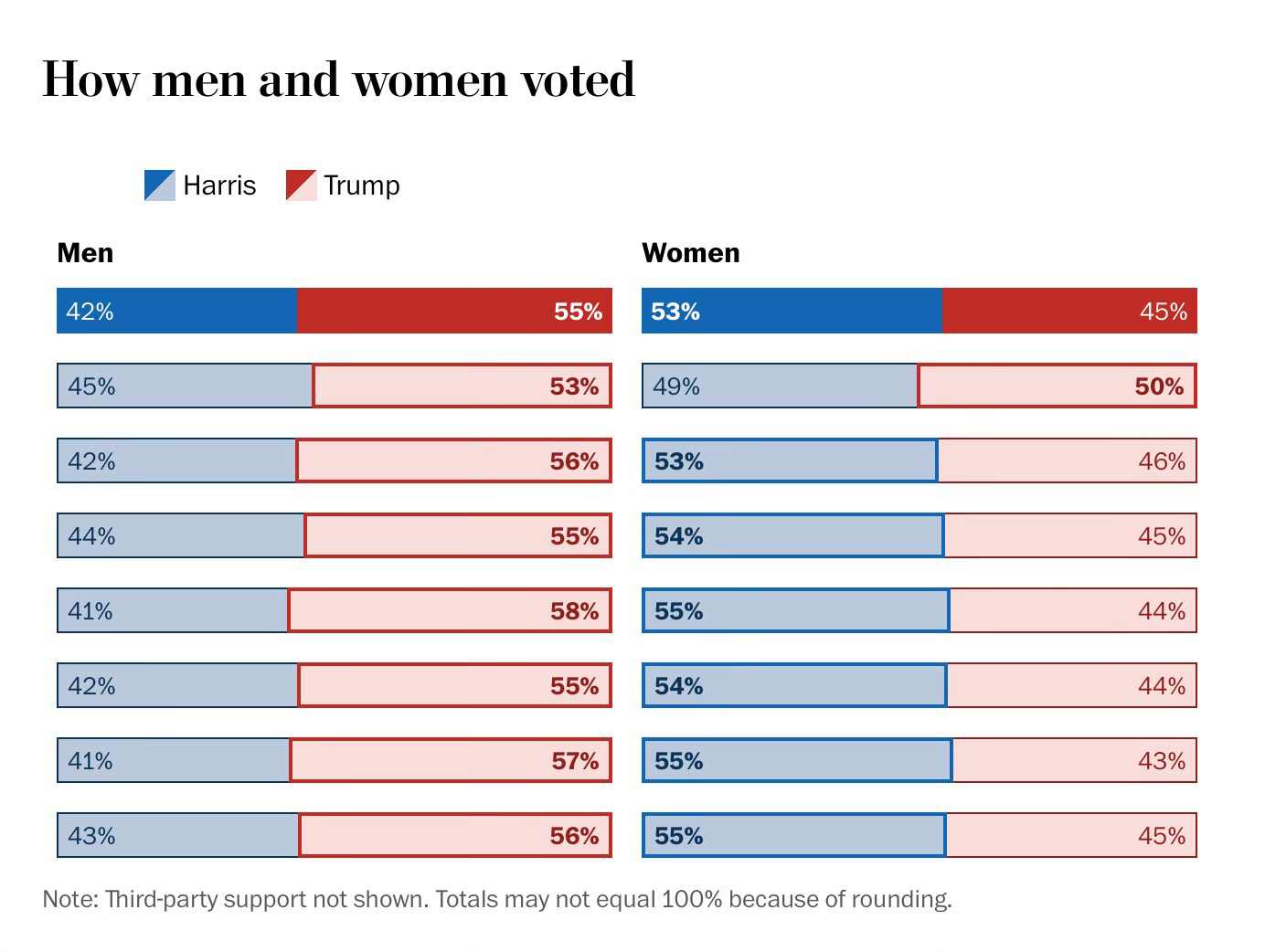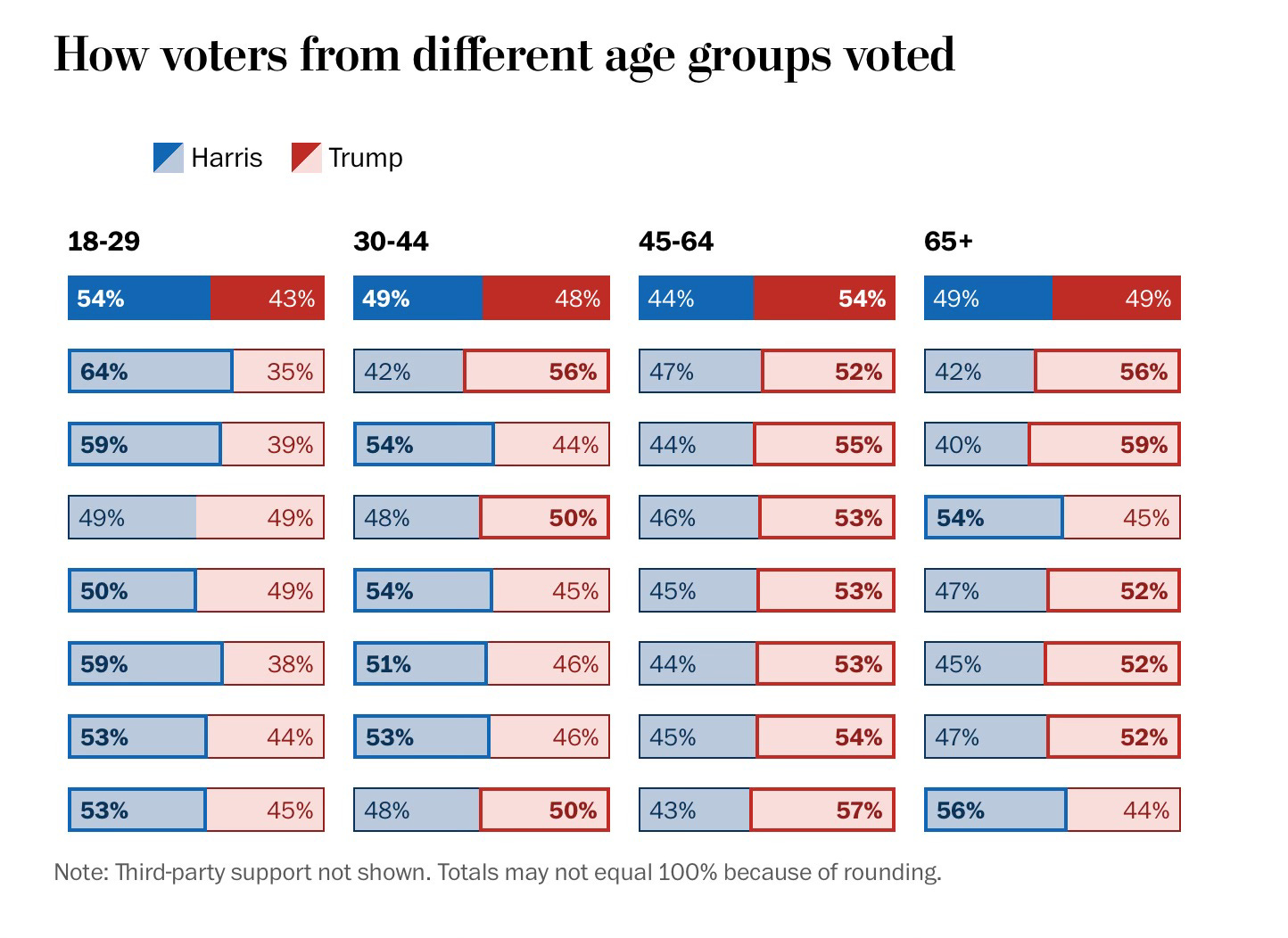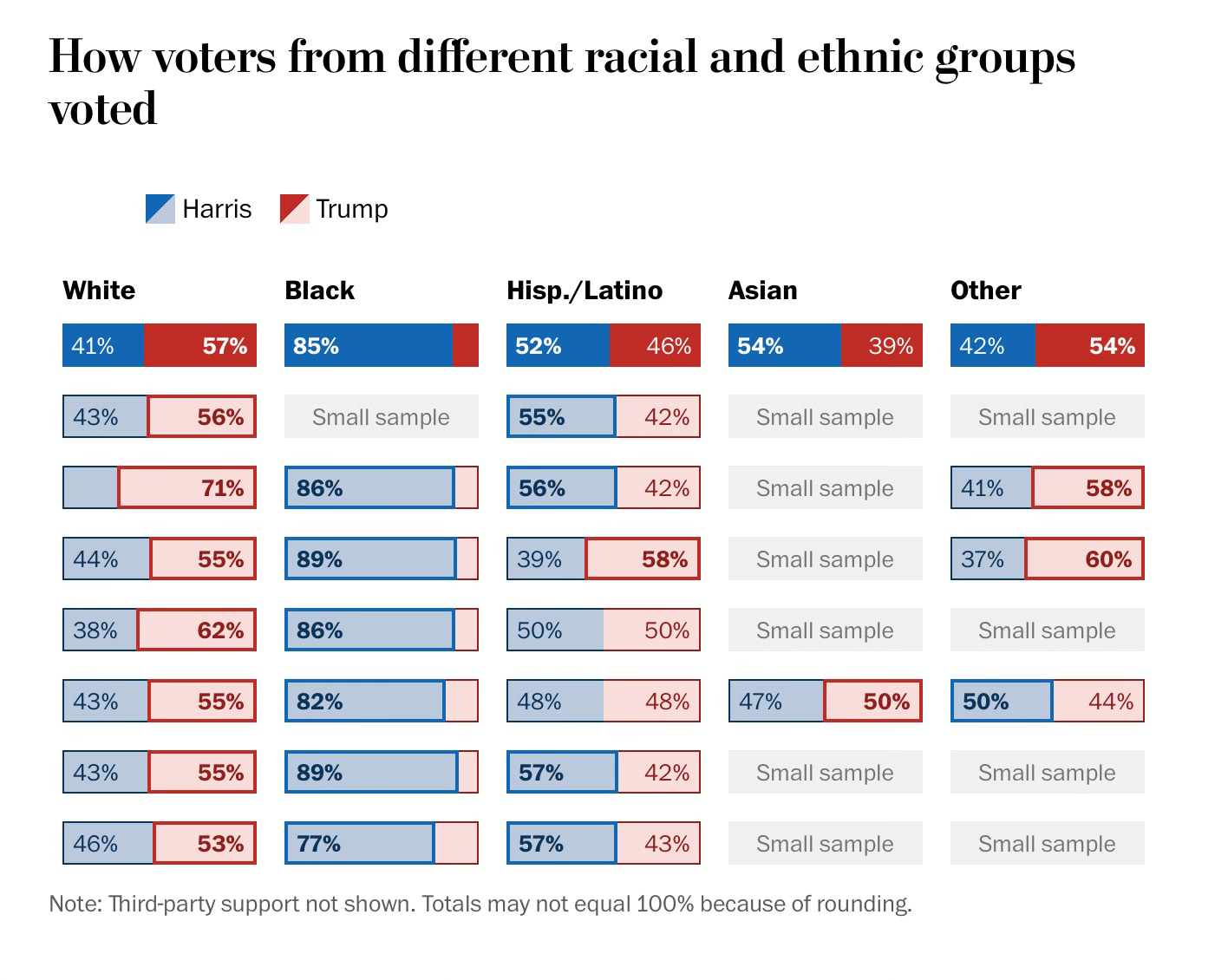Making Sense of the 2024 US Election
Donald J. Trump is the 47th President of the United States. Let's find out why voters trusted him a second time.

Donald J. Trump became the 47th president of the United States of America last week. The 78-year-old was running for the third time, after becoming the republic’s 45th president in 2016 and getting ousted from the role in 2020 in favour of Joe Biden. Trump’s opponent this time around was democrat Kamala Harris, who put up a good fight after being forced to run an 107 day campaign when her former running mate Joe Biden pulled out of the race in late July. Now that the dust has settled, I will attempt to give a comprehensive analysis of the result and what it means for the nation and world at large.
Much has been said about the supposed low turnout of the 2024 presidential election, however, those claims were prematurely made while votes were still being counted. The reality is it proved to be a strong turnout for both Democratic and Republican candidates alike. As of the time of writing, Trump has garnered 75,115,826 votes compared to Harris’ 71,819,593 votes. These numbers are currently 8,572,057 less than the 155,507,476 votes cast in 2020, but that discrepancy is likely to fall as states like California and Oregon get further along with counting.
Even though it is expected that the total vote number will likely be lower in 2024, one has to remember the tailwinds that existed in 2020. Those tailwinds created a very galvanized electorate that was ready to go out and vote. Covid-19 had raged rampant that year, leaving death and bereavement in its wake. The virus, paired with lockdown mandates, economic uncertainty and fiery race relations on the back of a summer of police brutality protests caused Americans to head to the polls in record numbers.
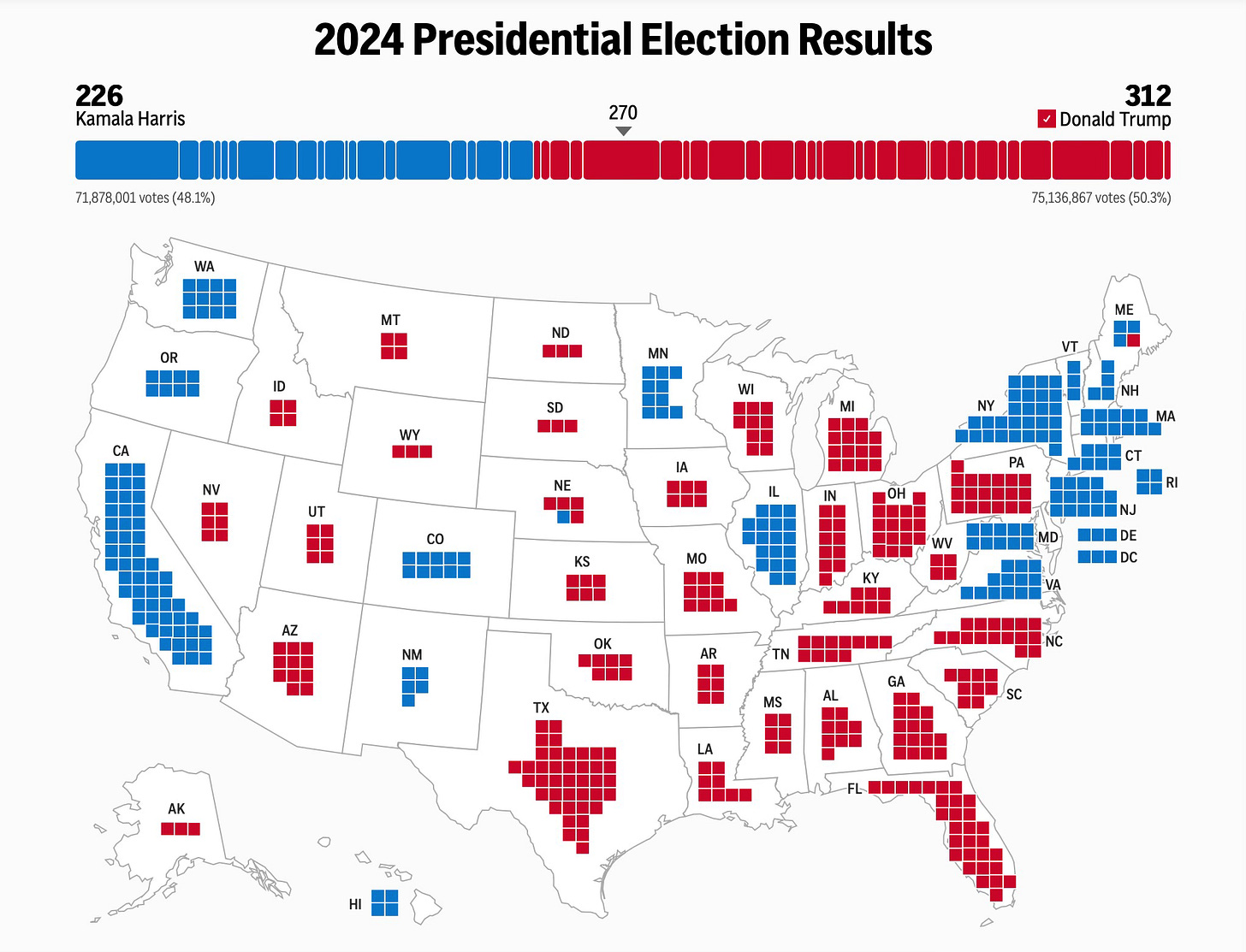
This time around, Donald Trump has won the popular vote and the electoral college comprehensively. The latter having been determined by Trump winning all the seven swing states (Arizona, Georgia, Michigan, Nevada, North Carolina, Pennsylvania and Wisconsin). Trump is sitting at a total of 312 electoral college votes, as opposed to Harris’ 226 electoral college votes. Only 270 electoral votes are necessary to win the presidential election, thus making this the largest electoral college defeat since Barack Obama’s decisive victory over Mitt Romney in 2012.
But how did we get here? Lets analyze.
Global Anti-Incumbent Sentiment
The global socio-economic environment created by the aftermath of the Covid-19 pandemic has created arguably the most hostile environment in history for incumbent parties and politicians across the developed world.
From America’s Democrats to Britain’s Tories, Emmanuel’s Macron’s Ensemble coalition in France to Japan’s Liberal Democrats, even to India’s Narendra Modi’s erstwhile dominant BJP, governing parties and leaders have undergone an unprecedented series of reversals this year. The incumbent leadership in every single one of the 10 major countries that held national elections in 2024 were given a kicking by voters. This is the first time this has ever happened in almost 120 years of records.
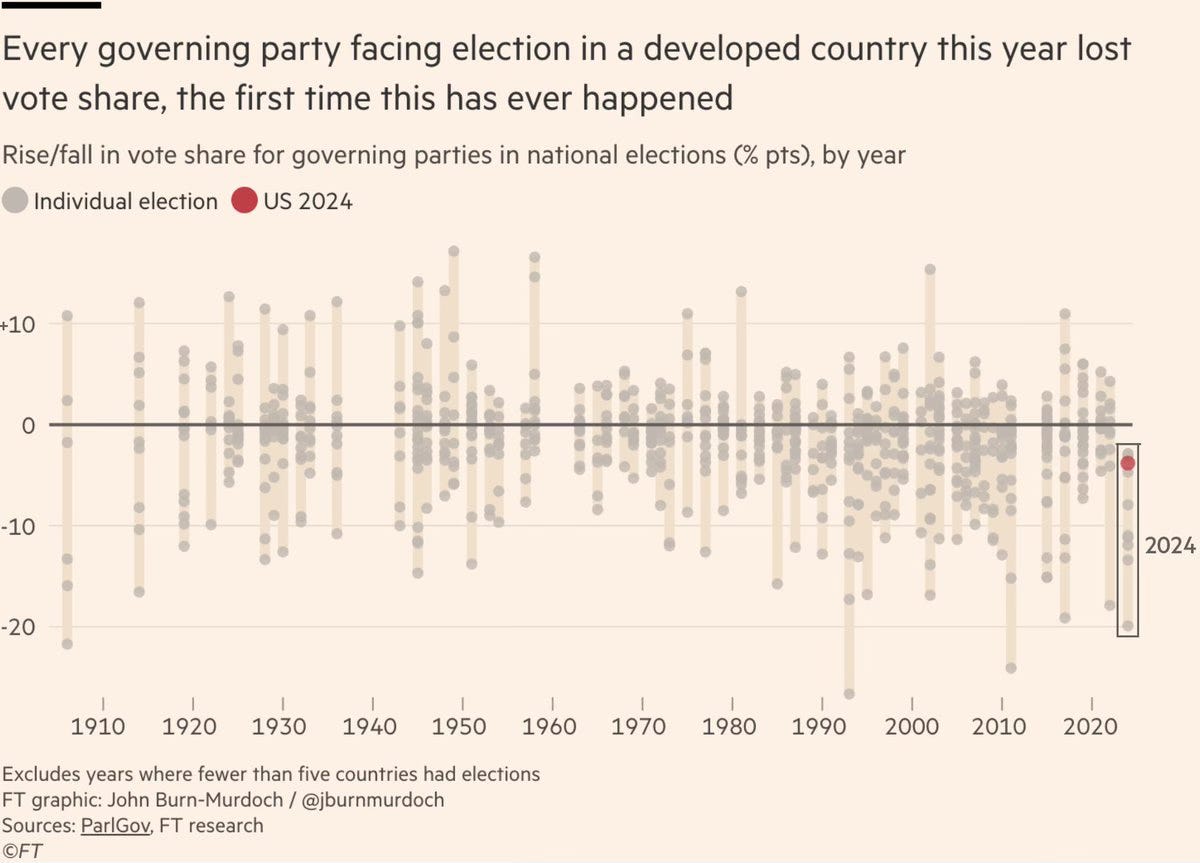
The post pandemic recovery, characterized by high inflation, lockdown mandates, social and civil unrest and a rise in antisocial behaviour, was very unpleasant for voters. Some of these issues may not have been necessarily caused by the ruling parties, but they were unpleasant enough for voters to demand a change. This is happening the world over, so it’s no surprise that the US follwed suit. In fact, relative to other developed countries, the US Democratic candidate Kamala Harris outperformed the global trend.
People wanted change, desperately. It didn’t matter how polarizing the change was presented. A turn away from the status quo and a breakup of the establishment rule were powerful messages that carried the Trump campaign to victory, as well as a multitude of campaigns in the developed world.
The Economy (Or the perception of it)
The US economy is in a fascinating place. By regular metrics that economists use, it's doing great. The US currently has 2.4% inflation, the lowest level since February 2021, 4% unemployment, and has seen years of sustained real income growth. The country is by far the best post-pandemic economic performer among G7 nations.
However, for most Americans, the depth of their relationship with the economy will be characterized by their weekly grocery trips, mortgage and car loan rates and house prices, not abstract macro indicators. That’s just the reality of things.
In those day to day metrics, the populace felt like the economy was not in a good place, far from it. The steep inflation that followed the pandemic as result of supply chain slowdowns and the Ukraine-Russia conflict led to prices that were near unbearable for the median American. Interest rate hikes that were employed by the Federal Reserve throughout 2022 and 2023 to quell said inflation added insult to injury by manufacturing a painful borrowing environment.
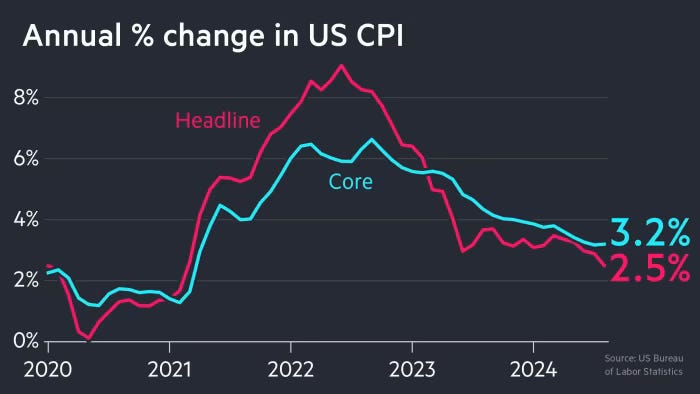
This is a squeeze that Americans felt sharply during the bulk of Joe Biden’s presidency. At the same time, headlines highlighting the billions of dollars in aid being sent to Ukraine and Israel dominated the news cycles, which seemed to infuriate voters who felt like there were more pressing economic issues back home.
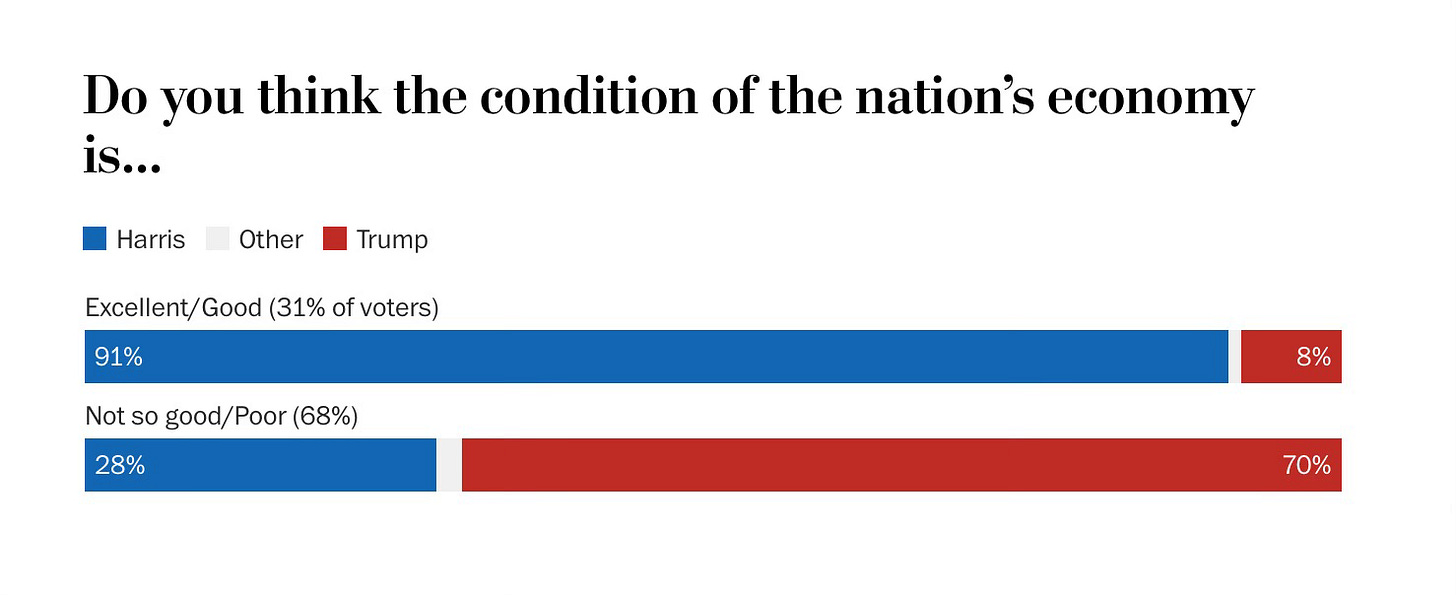
Despite this, wealthier Americans were a bit better insulated against the economic woes that plagued the country during the post-pandemic recovery period. Democratic candidate Kamala Harris performed much better than her opponent among voters who earn above $100,000 a year, according to research from the Washington Post, and much worse among voters between $50,000 and $100,000 and below $50,000. Trump was clearly the candidate of choice for the often-discussed “working class”.
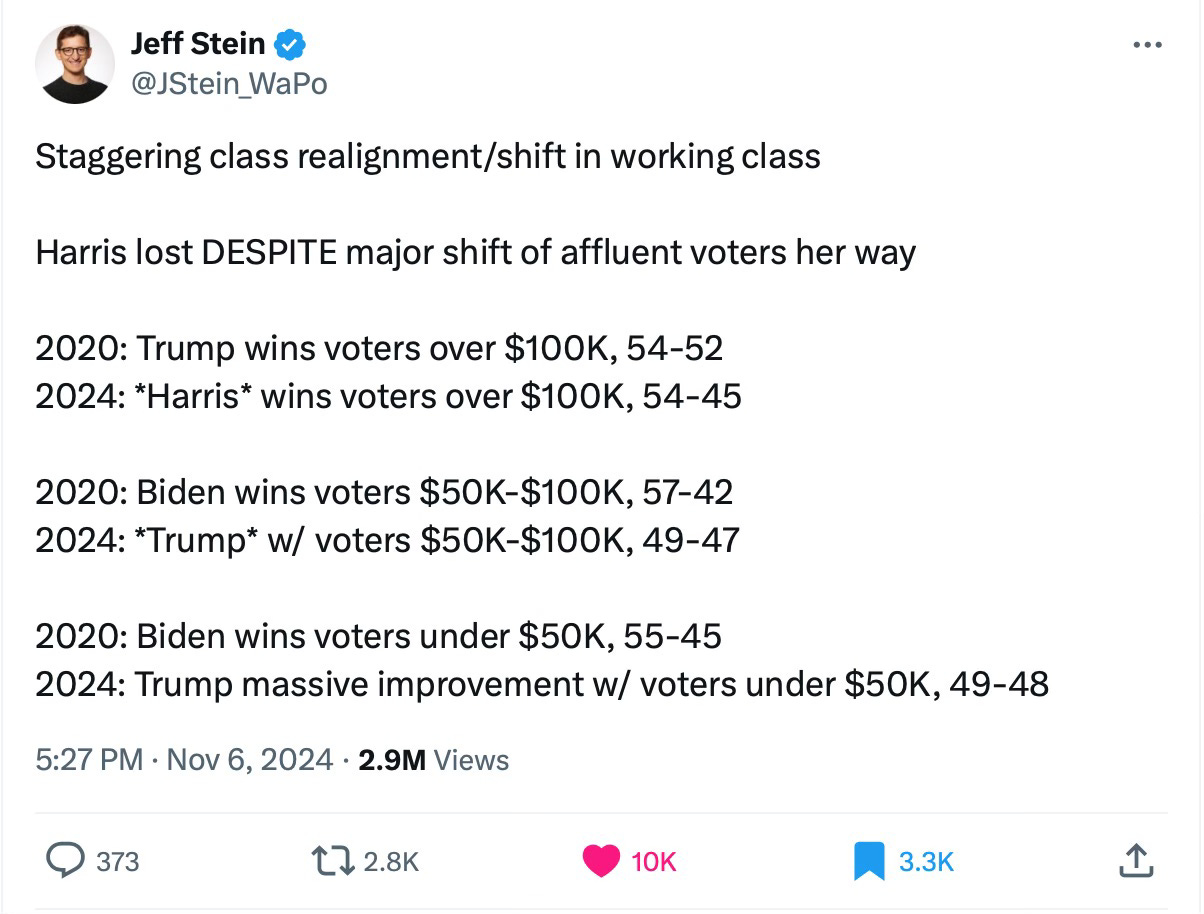
Social Issues
Over the last decade, America and the English speaking world at large has moved further to the left on a multitude of social issues. Women’s and minority rights, the freedoms of the LGBTQ community as well as immigration are topics that government legislation as well as the general zeitgeist have moved more favourably towards. In America, these causes have historically been pushed by the Democratic Party, while the Republican Party and their members have often adopted a conservative stance towards them.
For those on the right, there is now a sense that stances maintained by the ruling Democratic Party have gone too far and need reigning in. Chief among these is abortion rights, which were a contentious topic in this election.
Two years ago, the U.S Supreme Court, which Trump appointed 3 out of 9 judges to in his first term, overturned Roe v. Wade and paved the way for 22 states to restrict access to abortion. Trump has throughout the campaign had shifting views on abortion, frustrating social conservatives and anti-abortion rights groups that are pushing for a nationwide ban. His final stance was that he would leave it to the states to determine whether they would ban it and after how many weeks.
On the other hand, the Harris' campaign pledged that if elected president, "she will never allow a national abortion ban to become law. And when Congress passes a bill to restore reproductive freedom nationwide, she will sign it."

This issue most definitely galvanized the female electorate, with just over half of women nationally supporting Harris. However, women were expected to vote even more overwhelmingly for Harris - An August CBS News poll found that 60% of voters believe abortion should be legal in all or most cases, and among women likely voters who want abortion to be legal, 76% support Harris. Even yet, this was not the only issue that determined a potential voters vote, and some pundits argue that the economy and anti-incumbency were just bigger issues on election day.
Other Issues
Foreign Policy
Donald Trump ran a campaign promising more isolationist foreign policy - pledging to end the “Forever Wars” such as the Russia-Ukraine conflict and Israel’s war with Hamas. Harris was more hawkish, not promising any ceasefires but pledging to work towards them. The Trump campaign seemed to have picked the preferred stance among most of the electorate.
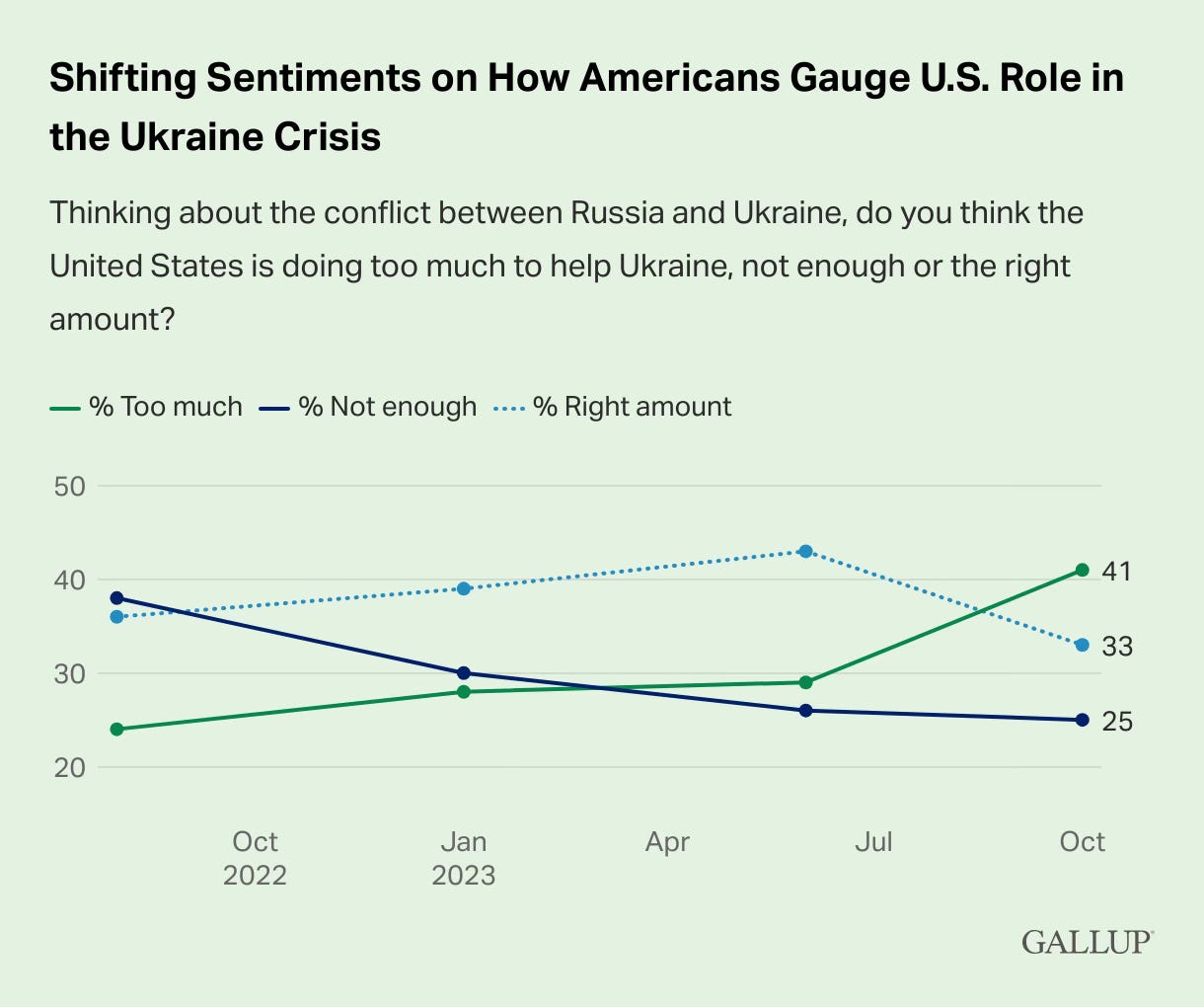
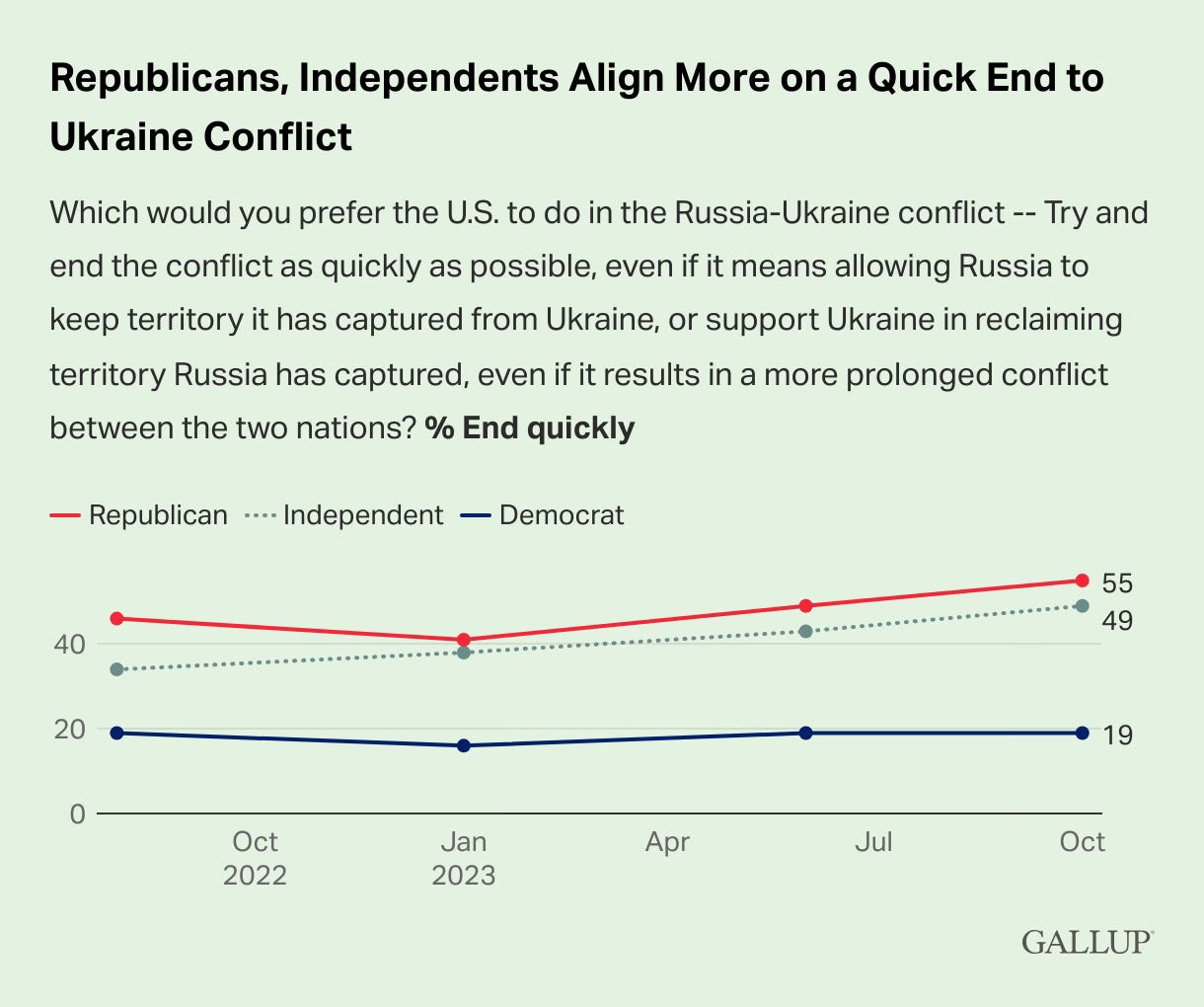
Gender of Candidate
Democratic Presidential candidate Kamala Harris would have been the first female president in U.S history had she won. There was plenty of conversation prior to the election about whether this would hurt her in the polls. From the data, however, we can see that this was not really the case. Harris fared well with a large breadth of the electorate, which shows that her gender played a very small role in their assessment of her capabilities.
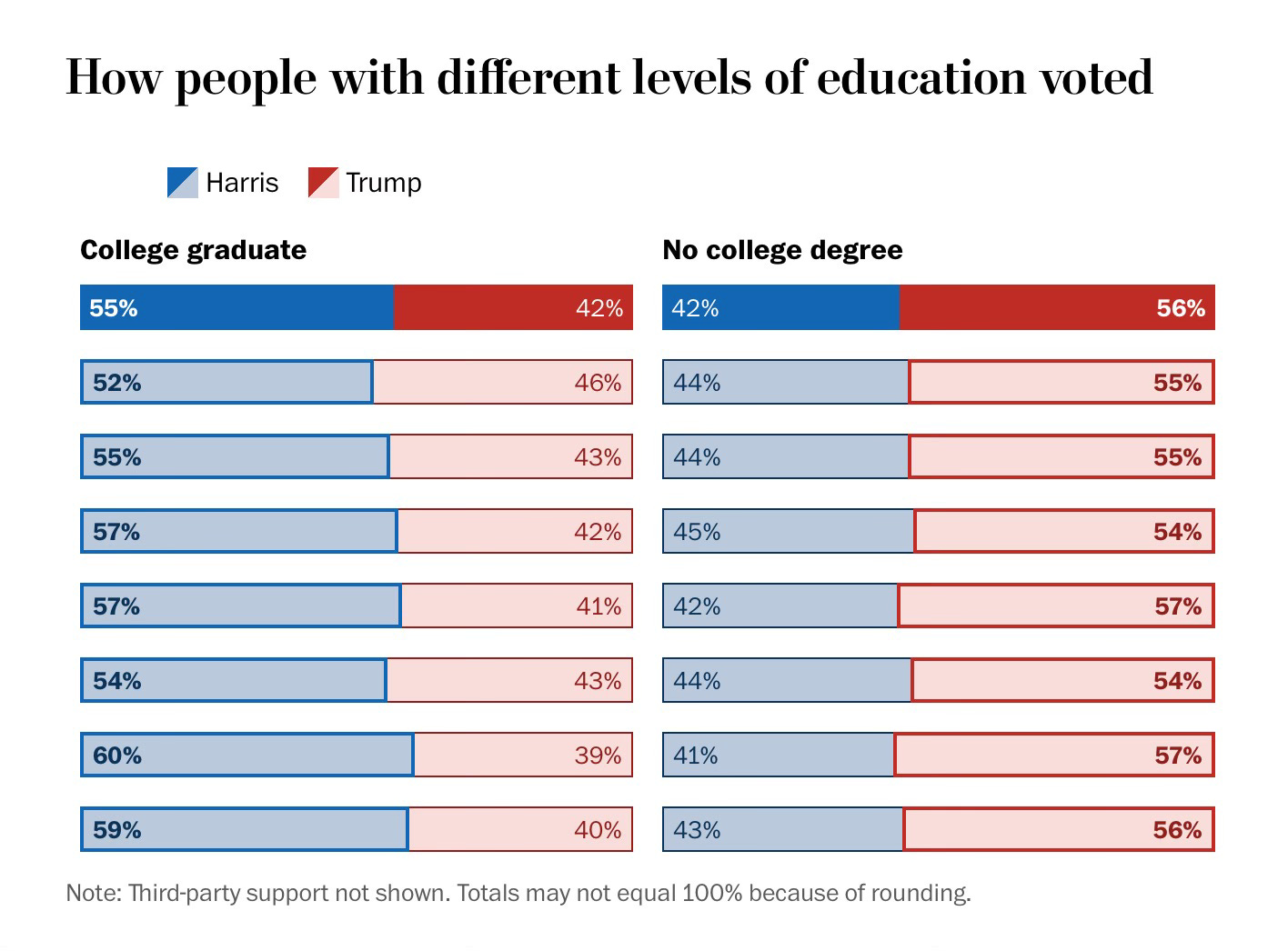
Conclusion & My Take
All these factors point to one thing, the electorate wanted change. Change. That’s a powerful message. Just ask Barack Obama, who used that slogan to dominate the 2008 election in a campaign that is still revered to this day.
Donald Trump is very polarizing, but his message this time around may have permeated even those who had concerns about his abrasiveness and character. Many frankly can’t afford to care how abrasive he is. They have to put food on their tables, for them and their families. Promising to make that easier for them is an incredibly compelling message.



